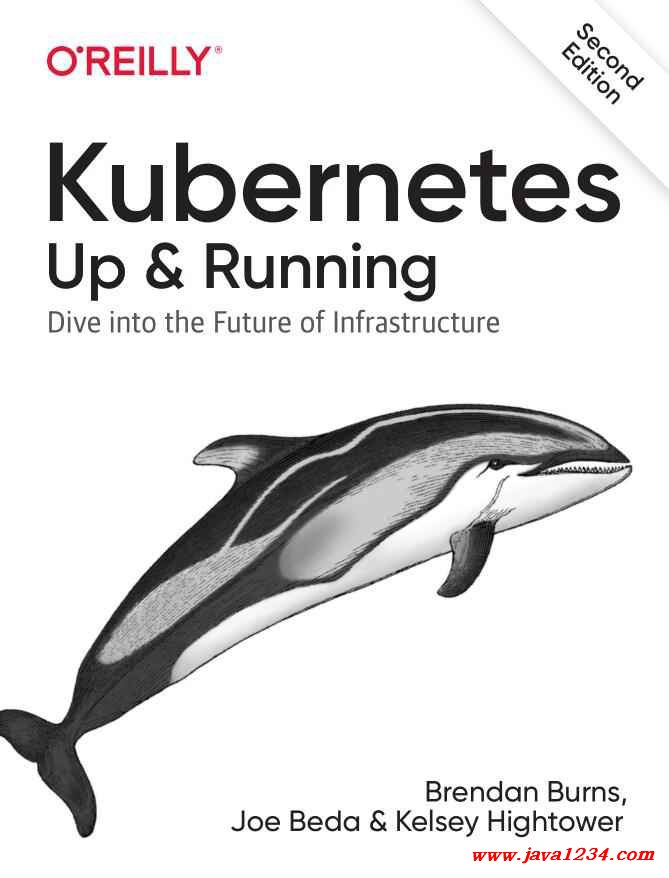| 失效链接处理 |
|
Kubernetes Up and Running 2nd Edition PDF 下载
本站整理下载:
相关截图:

主要内容:
Kubernetes: A Dedication
Kubernetes would like to thank every sysadmin who has woken up at 3 a.m. to restart
a process. Every developer who pushed code to production only to find that it didn’t
run like it did on their laptop. Every systems architect who mistakenly pointed a load
test at the production service because of a leftover hostname that they hadn’t updated.
It was the pain, the weird hours, and the weird errors that inspired the development
of Kubernetes. In a single sentence: Kubernetes intends to radically simplify the task
of building, deploying, and maintaining distributed systems. It has been inspired by
decades of real-world experience building reliable systems and it has been designed
from the ground up to make that experience if not euphoric, at least pleasant. We
hope you enjoy the book!
Who Should Read This Book
Whether you are new to distributed systems or have been deploying cloud-native sys‐
tems for years, containers and Kubernetes can help you achieve new levels of velocity,
agility, reliability, and efficiency. This book describes the Kubernetes cluster orches‐
trator and how its tools and APIs can be used to improve the development, delivery,
and maintenance of distributed applications. Though no previous experience with
Kubernetes is assumed, to make maximal use of the book you should be comfortable
building and deploying server-based applications. Familiarity with concepts like load
balancers and network storage will be useful, though not required. Likewise, experi‐
ence with Linux, Linux containers, and Docker, though not essential, will help you
make the most of this book.
xiii
Why We Wrote This Book
We have been involved with Kubernetes since its very beginnings. It has been truly
remarkable to watch it transform from a curiosity largely used in experiments to a
crucial production-grade infrastructure that powers large-scale production applica‐
tions in varied fields, from machine learning to online services. As this transition
occurred, it became increasingly clear that a book that captured both how to use the
core concepts in Kubernetes and the motivations behind the development of those
concepts would be an important contribution to the state of cloud-native application
development. We hope that in reading this book, you not only learn how to build reli‐
able, scalable applications on top of Kubernetes but also receive insight into the core
challenges of distributed systems that led to its development.
Why We Updated This Book
In the few years that have passed since we wrote the first edition of this book, the
Kubernetes ecosystem has blossomed and evolved. Kubernetes itself has had many
releases, and many more tools and patterns for using Kubernetes have become de
facto standards. In updating the book we added material on HTTP load balancing,
role-based access control (RBAC), extending the Kubernetes API, how to organize
your application in source control, and more. We also updated all of the existing
chapters to reflect the changes and evolution in Kubernetes since the first edition. We
fully expect to revise this book again in a few years (and look forward to doing so) as
Kubernetes continues to evolve.
A Word on Cloud-Native Applications Today
From the first programming languages, to object-oriented programming, to the
development of virtualization and cloud infrastructure, the history of computer sci‐
ence is a history of the development of abstractions that hide complexity and
empower you to build ever more sophisticated applications. Despite this, the develop‐
ment of reliable, scalable applications is still dramatically more challenging than it
ought to be. In recent years, containers and container orchestration APIs like Kuber‐
netes have proven to be an important abstraction that radically simplifies the devel‐
opment of reliable, scalable distributed systems. Though containers and orchestrators
are still in the process of entering the mainstream, they are already enabling develop‐
ers to build and deploy applications with a speed, agility, and reliability that would
have seemed like science fiction only a few years ago.
|




 苏公网安备 32061202001004号
苏公网安备 32061202001004号



